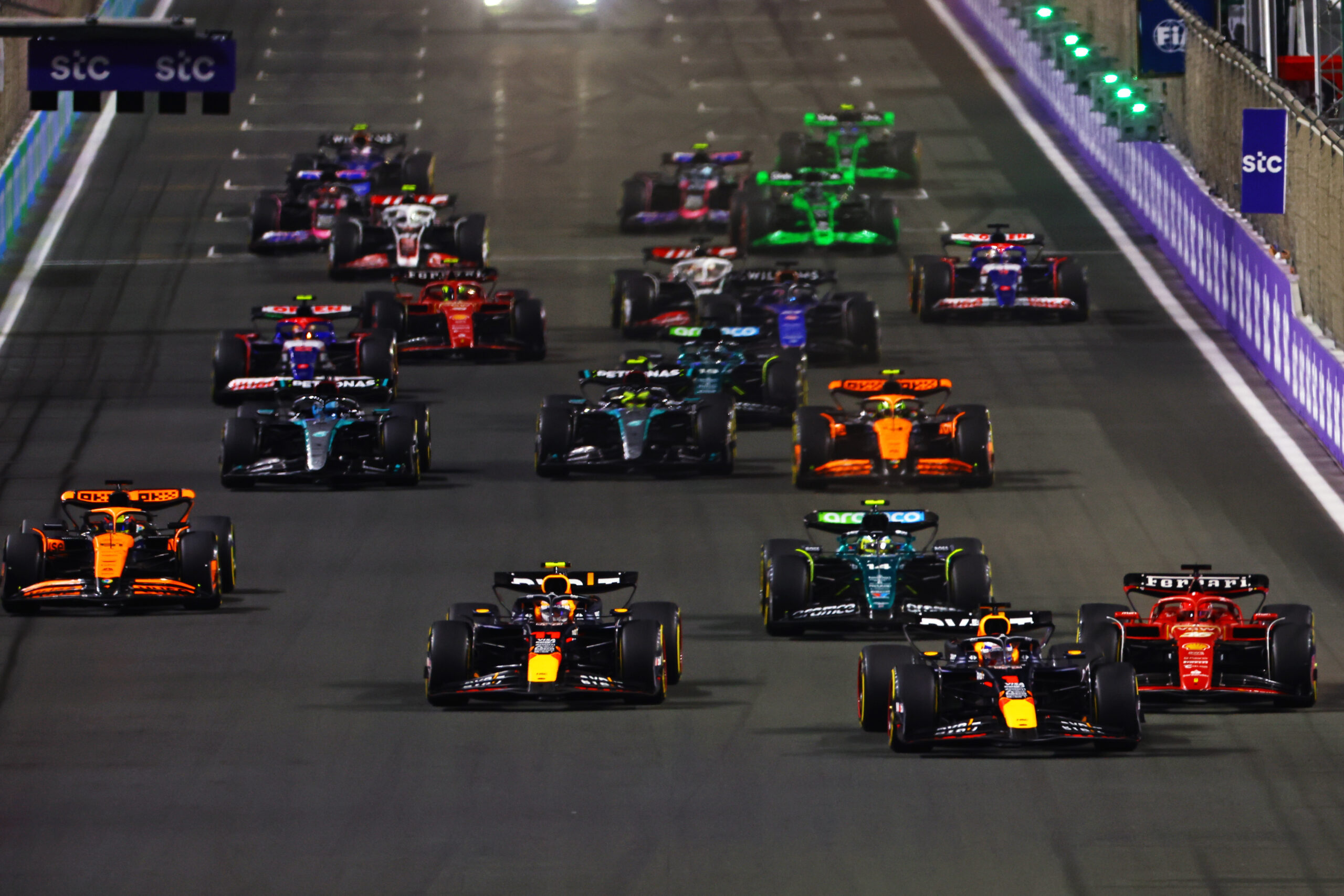F1’s latest regulations change will be introduced in the 2026 season with the power units undergoing the biggest change.
Ahead of the 2014 season, Formula 1 moved from the V8s to the 1.6-litre V6 turbo hybrid power units. The turbo hybrids used in F1 are quite complex. They consist of an Internal Combustion Engine (ICE), Turbo Charger, MGU-H, MGU-K, control electronics and the energy store.
For the 2026 season, the V6 turbo hybrids will undergo the biggest change since their introduction. The new power units will be designed to use significantly less energy, but will still be as powerful.
More electrical power, more horsepower and less fuel
In 2026, the V6 turbocharged Internal Combustion Engine (ICE) will include a far more powerful electrical component. The MGU-K (Kinetic Motor Generator Unit) will have nearly three times more electrical power produced by the current hybrid components.
More braking energy which would otherwise be wasted, will be collected and utilized to provide more power to the MGU-K (Kinetic Motor Generator Unit). This strategy aims to significantly increase the amount of electrical power produced by the hybrid components. The MGU-K is projected to generate around 350kW in 2026, a substantial increase from the current deployment of 120kW.
And with that higher proportion of electrical power, less fuel will flow to the engines. This means that less fuel will be used overall. In 2013, 160kg of fuel was used in a race. In 2020, it was at 100kg; and in 2026 F1 is aiming for each car to use just 70kg of fuel during a race. However, the power units will still provide over 1,000 horsepower, meaning they could be louder than they currently are.
F1 will also be shifting from controlling the fuel flow through a maximum mass flow rate to a maximum energy flow rate. It seems that the focus is indeed shifting towards utilizing more electrical power within the power unit, particularly with the increased emphasis on electrical components like the MGU-K. This would involve regulating the maximum rate at which electrical energy can be utilized within the power unit to optimize performance and efficiency. This transition could potentially make it easier for F1 power units to generate more energy faster.
Sustainability
F1 is still determined to hit net zero carbon by 2030, and these new regulations are proof of that.
The new F1 power units will run on 100% sustainable fuels. This means that no new fossil carbon will be burned. Carbon will instead be derived from non-food sources, genuine municipal waste, or even out of the atmosphere.
Recycling options will be mandated for batteries. Also, materials such as cobalt will be recycled at the end of the MGU-K’s life.
An engine-specific cost cap will be introduced. The banning of expensive manufacturing materials and systems such as the MGU-H (Motor Generator Unit – Heat) and components being standardised will help lower costs. Dyno hours – the amount of time that F1 teams are allowed to spend testing their power units on dynamometer (dyno) rigs – will also be limited. Engineers will continue to be able to innovate around the electrical systems to power their teams and develop a more sustainable future in the process.
F1’s 2026 regulations will however still limit teams to using three power units per car, per season.
Challenges drivers and teams will face
Every time there is a regulation change this big in F1, challenges naturally present themselves. F1’s 2026 regulation’s biggest problem might be the removal of the MGU-H.
The MGU-H is primarily responsible for recovering energy from the exhaust gases’ heat. This energy is then converted into electrical energy and stored in the battery for later use. Without the MGU-H, teams will need to rely more on other energy recovery systems. Particularly the MGU-K and potentially other means of harvesting energy, to compensate for the lost energy from the exhaust heat.
With the removal of complexities such as the MGU-H from the power units, turbo lag might return. Turbo lag refers to the delay between the driver pressing the throttle and the turbocharger delivering an increase in power to the engine. Without the MGU-H to assist in overcoming the lag, there could be a delay in power delivery when a driver accelerates, particularly on corner exits. This delay could make the cars harder to control, requiring drivers to adjust their technique to compensate.
Additionally, the reintroduction of turbo lag could present a challenge for drivers and strategists. They would need to decide when the driver should and shouldn’t attack using the power unit’s electrical energy. Strategists may need to carefully manage energy deployment to optimize performance while ensuring energy is available when needed, adding complexity to race strategies.






